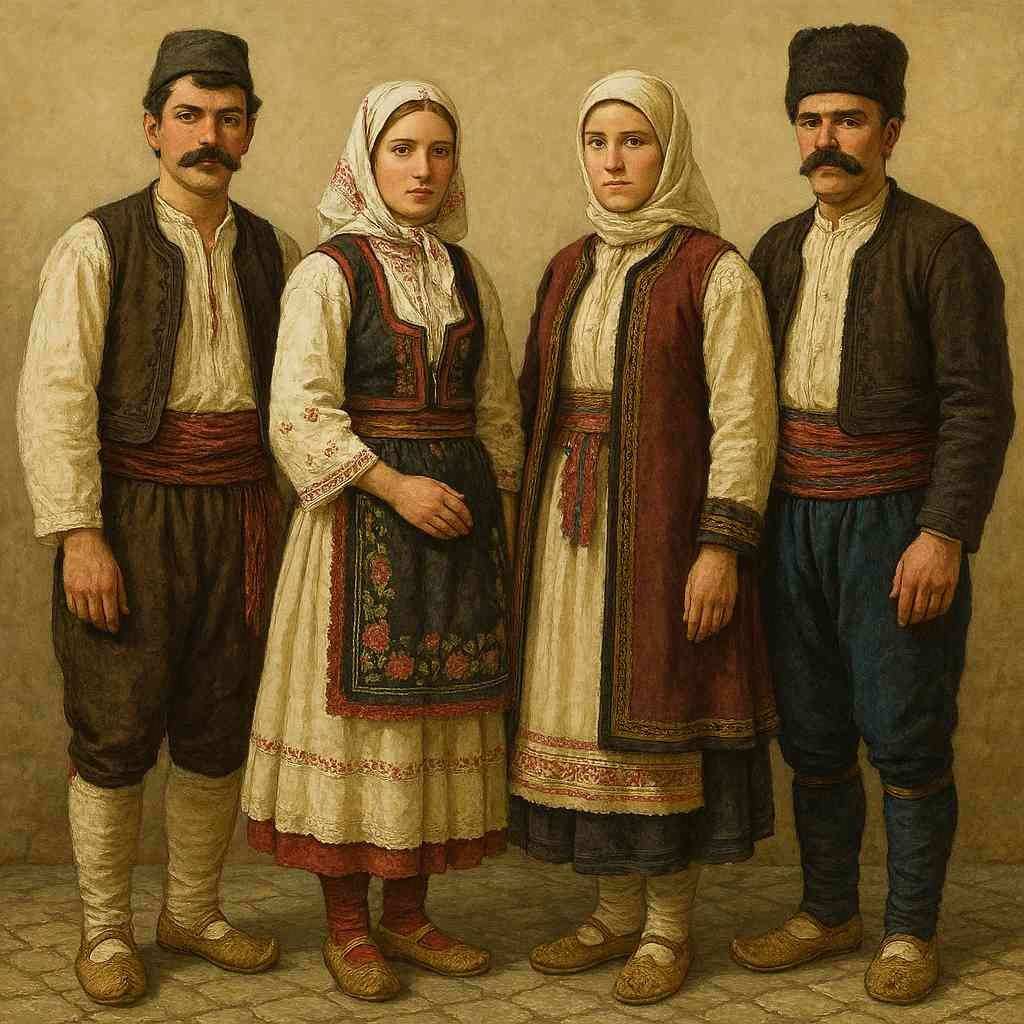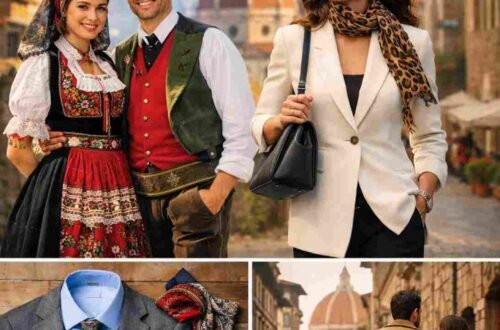Serbian traditional clothing is more than just clothes. It shows history, culture, and the way people lived long ago. Every part of Serbia has its own style, made with local materials and decorated with colorful patterns. From the fine embroidery of Šumadija to the warm wool coats in the mountains, each outfit tells a story. This guide explains the history, main clothes, symbols, and how they are used today.
Historical Background and Cultural Context
| Time Period | Influence | Clothing Style |
|---|---|---|
| Early Slavic (6th–9th century) | Local materials | Simple tunics made from hemp, flax, and wool |
| Ottoman (15th–19th century) | Turkish and Balkan | Added embroidery, sashes, and silk trims |
| Austro-Hungarian (18th–19th century) | Central Europe | Neater cuts and brighter fabrics |
| Modern (20th century–today) | Urban fashion | Used only for festivals and special days |
Main Points:
- Early people made clothes from what they grew or raised, like flax and sheep.
- Later, Turkish and Austrian rule added color and decoration.
- Clothes showed who you were and where you came from.
- By the 1800s, national dress became a sign of Serbian pride.
Main Garments and Accessories
| Garment | Description | Who Wore It | Material |
| Opanci | Leather shoes with curled toes | Men and women | Leather |
| Šajkača / Šubara | Wool or fur hat | Men | Wool or fur |
| Jelek / Zubun | Embroidered vest or long coat | Men and women | Wool or linen |
| Čakšire | Narrow wool pants | Men | Wool |
| Shirts / Blouses | White embroidered tops | Men and women | Linen or cotton |
| Tkanica (sash) | Woven belt with bright patterns | Both | Wool or hemp |
| Aprons / Headscarves | Colorful covers and wraps | Women | Wool or cotton |
| Jewelry | Coins, beads, metal work | Women | Silver or brass |
Quick Facts:
- Opanci are the most famous Serbian shoes.
- The jelek vest and zubun coat show careful handwork.
- The tkanica belt often had a meaning of strength and unity.
Materials, Craft, and Decoration
Common Materials:
- Linen and Hemp: Used for shirts and light clothes.
- Wool: Used for warm coats and vests.
- Leather: Used for shoes and belts.
- Natural Dyes: Made from plants, herbs, and nuts.
Embroidery (Vez):
- Designs: Flowers, circles, diamonds, trees.
- Meanings: Protection, love, fertility.
- Every family made their own designs by hand.
Crafting Steps:
- Spin and weave the fabric at home.
- Dye with natural colors.
- Sew and decorate by hand.
Read also: Complete Guide to Madagascar Clothing
Regional Styles and Variations
| Region | What It Looks Like | Influences |
| Šumadija & Morava (Central) | White shirts, red thread, gold jewelry | Most traditional Serbian style |
| Pirot, Vranje, Niš (South) | Bright colors, thick embroidery | Ottoman look |
| Vojvodina (North) | Light clothes, floral scarves | European style |
| Dinaric Highlands (West) | Wool layers, sheepskin coats | Cold mountain areas |
Overview:
- Central Serbia is simple and classic.
- Southern Serbia is colorful and rich in patterns.
- Northern Serbia looks more European.
- Western areas focus on warmth and comfort.
Symbols and Meanings
| Symbol | Meaning |
| Red Color | Life and protection |
| Black Color | Sadness or respect |
| White Color | Purity and peace |
| Embroidery Designs | Guard against evil |
| Apron | Motherhood and fertility |
| Tkanica Belt | Strength and unity |
Cultural Roles:
- Clothes showed social status and if someone was married.
- Worn for weddings, festivals, and holidays.
- Helped people show pride in their village or region.
Serbian Clothing Today
Where You See It:
- Folk Dance Groups: Perform in traditional dress.
- Festivals: National holidays and weddings.
- Museums: Display old and modern costumes.
Modern Influence:
- Serbian designers use old patterns in modern clothes.
- Opanci-style shoes appear in fashion shows.
- Handmade weaving is popular again among artisans.
How to Wear and Protect Traditional Clothing
Wearing Tips:
- Add a simple sash or vest to modern clothes.
- Buy handmade pieces from local crafters.
- Wear them with respect, not as costumes.
Preserving Tips:
- Keep clothes dry and away from sunlight.
- Wash gently by hand.
- Store in soft cloth or acid-free paper.
- Write down where the clothes came from and who made them.
Places to Learn and See More
- Ethnographic Museum (Belgrade): Large collection of costumes.
- Pirot Museum of Ponisavlje: Focuses on weaving.
- Vojvodina Museum (Novi Sad): Shows northern styles.
- Google Arts & Culture: Online Serbian folk costume galleries.
Conclusion
Serbian traditional clothing is a part of the country’s soul. It connects people to their past and keeps culture alive. Every piece — from the leather opanci to the embroidered blouse — carries a message of pride and identity. Even today, these clothes inspire designers, dancers, and anyone who values heritage. The beauty of Serbian clothing reminds us that tradition never dies; it changes and grows with time.





